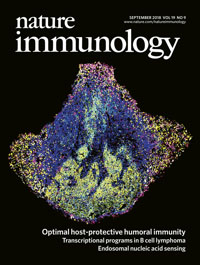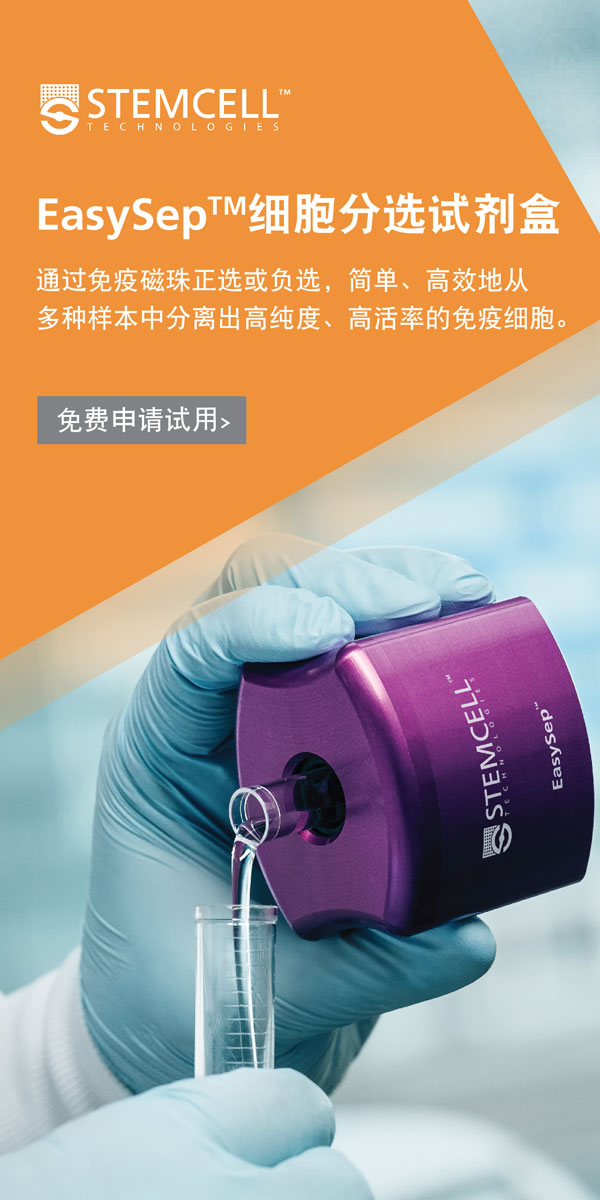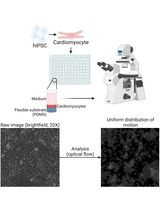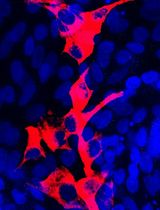- EN - English
- CN - 中文
Induced Germinal Center B Cell Culture System
诱导生发中心B细胞培养系统
发布: 2019年02月20日第9卷第4期 DOI: 10.21769/BioProtoc.3163 浏览次数: 15652
评审: Ivan ZanoniJulia JellusovaMeenal Sinha

相关实验方案
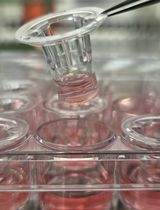
研究免疫调控血管功能的新实验方法:小鼠主动脉与T淋巴细胞或巨噬细胞的共培养
Taylor C. Kress [...] Eric J. Belin de Chantemèle
2025年09月05日 3445 阅读
Abstract
The germinal center (GC) is the site where B cells undergo clonal expansion, affinity-based selection, and differentiation into memory B cells or plasma cells. It has been difficult to elucidate regulatory mechanisms for the dynamic GC B cell maturation and differentiation, partly because experimental manipulation of GC B cells in vivo has been limited and no in vitro system has been available that resembles B cell reaction in GC. Here we describe the protocol for a culture system named “induced GC B (iGB) culture system” which can induce massive expansion of B cells that exhibit GC B cell-like phenotype, and thus it mimics the GC reaction. This protocol can be useful to elucidate the molecular mechanisms of GC B cell differentiation.
Keywords: iGB cell (iGB细胞)Background
In the field of T cell immunology, in vitro culture systems that allow differentiation of naive T cells toward specific effector T cell subsets have been widely used to study molecular mechanisms for the T-cell differentiation. However, there has been no practical culture system to effectively induce expansion of B cells with high viability and differentiation towards GC B cells. To study the GC B cell biology in vitro, we have developed a novel B-cell culture system that mimics GC B-cell reaction (Nojima et al., 2011). For this system, we generated a feeder cell line named 40LB, a Balb/c 3T3 cell line expressing exogenous CD40-ligand (CD40L) and B-cell activating factor (BAFF) that together promote B cell proliferation and survival. When naive B cells are cultured with IL-4 for the first 4 days and then with IL-21 for the second 4 days on the feeder cells, B cells proliferate exponentially up to 10,000 fold, efficiently undergo isotype switching to IgG1 and IgE, the Th2 related isotypes, and express GC B-cell markers such as GL7 and Fas. Thus, we termed the B cells propagated in this system in-vitro-induced GC B (iGB) cells, and this system the iGB cell culture system. Compared to simply stimulating B cells with anti-CD40 antibody and BAFF with IL-4, which can induce only a 20-fold expansion of B cells in 6 days and less efficient isotype switching, iGB cell culture system is very useful. The iGB cell culture system have been widely used to study B cell biology, such as GC B cell expansion and differentiation, signaling from various receptors, immunoglobulin gene class-switch recombination, and so on (Fukao et al., 2014; Haniuda et al., 2016). The iGB cells not only phenotypically resemble genuine GC B cells but they functionally mimic some aspects of GC B cells: the iGB cells after the primary culture with IL-4 differentiate in vivo into memory-like B cells when transferred into mice, whereas those after the secondary culture with IL-21 differentiate in vivo into plasma cells that are relatively long-lived (Nojima et al., 2011; Moutai et al., 2014). Hence the iGB cell culture system is also applicable for the studies of molecular mechanisms for their differentiation into memory B cells or long-lived plasma cells, and their responses (Takatsuka et al., 2018). Here, we describe a detailed protocol for the iGB cell culture system.
Materials and Reagents
- 50 ml tube (Thermo, catalog number: 339652)
- 15 ml tube (Thermo, catalog number: 339650)
- 5 ml round-bottom tube (Falcon, catalog number: 352054)
- 10 cm dish (Falcon, catalog number: 353003)
- 6-well plate (Costar, catalog number: 3516)
- 12-well plate (Costar, catalog number: 3513)
- 26 G needle (Terumo, catalog number: NN-2613S)
- 10 ml syringe (Terumo, catalog number: SS-10SZ)
- Cryovial (Thermo, catalog number: 375418)
- Frosted glass slides (Matsunami, catalog number: S2226)
- MACS LS Columns (Miltenyi Biotec, catalog number: 130-042-401)
- 100 µm mesh (TGK, catalog number: N—No.200HD)
- 40 µm mesh (TGK, catalog number: N—No.355T)
- 40LB cells: BALB/c3T3 cells (provided by RIKEN BRC) stably expressing mouse CD40L and mouse BAFF (Nojima et al., 2011)
- D-MEM (high glucose, WAKO, catalog number: 044-29765)
- Fetal bovine serum (FBS, see Notes)
- Trypsin-EDTA (WAKO, catalog number: 204-16935)
- Penicillin-streptomycin (Gibco, catalog number: 15140-122)
- RPMI-1640 (WAKO, catalog number: 189-02025)
- HEPES (Dojindo, catalog number: 346-08235)
- 2-mercaptoethanol (2-ME, Gibco, catalog number: 21985-023)
- NaCl (WAKO, catalog number: 195-01663)
- KCl (WAKO, catalog number: 163-03545)
- Na2HPO4 (WAKO, catalog number: 196-02835)
- KH2PO4 (WAKO, catalog number: 169-04245)
- EDTA (Dojindo, catalog number: 345-01865)
- Biotinylated anti-CD43 (BD Pharmingen, clone: S7, catalog number: 553269)
- Biotinylated anti-Ter119 (Biolegend, clone: TER-119, catalog number: 116204)
- Biotinylated anti-CD4 (Biolegend, clone: GK1.5, catalog number: 100404)
- Biotinylated anti-CD8 (Biolegend, clone: 53-6.7, catalog number: 100704)
- Biotinylated anti-CD49b (Biolegend, clone: DX5, catalog number: 108904)
- Biotinylated anti-H-2Kd (Biolegend, clone: SF1-1.1, catalog number: 116604)
- Biotinylated anti-CD138 (Biolegend, clone: 281-2, catalog number: 142512)
- Streptavidin Particles Plus-DM (BD, IMag, catalog number: 557812)
- Recombinant mouse IL-4 (PeproTech, catalog number: 214-14)
- Recombinant mouse IL-21 (PeproTech, catalog number: 210-21)
- 3T3 medium (see Recipes)
- B cell medium (BCM) (see Recipes)
- Phosphate-buffered saline (PBS) (see Recipes)
- MACS buffer (see Recipes)
- Antibody cocktail for B cell isolation (for one spleen) (see Recipes)
- Antibody cocktail for feeder cell depletion (for cells) (see Recipes)
Equipment
- Pipettes
- Autoclave
- 37 °C water bath
- CO2 incubator (Panasonic, catalog number: MCO-170AIC-PJ)
- Laminar flow hood (SANYO, Bio clean bench)
- Mr. Frosty (Thermo, catalog number: 5100-0001)
- -80 °C freezer
- Liquid nitrogen storage tank
- Cell separation Magnet (BD IMag, catalog number: 552311)
- Centrifuge (Kubota, 4000, 5911, 6200)
- MACS MultiStand (Miltenyi Biotec, catalog number: 130-042-303)
- MidiMACS Separator (Miltenyi Biotec, catalog number: 130-042-302)
Procedure
文章信息
版权信息
© 2019 The Authors; exclusive licensee Bio-protocol LLC.
如何引用
Haniuda, K. and Kitamura, D. (2019). Induced Germinal Center B Cell Culture System. Bio-protocol 9(4): e3163. DOI: 10.21769/BioProtoc.3163.
分类
免疫学 > 免疫细胞分化 > B 细胞
免疫学 > 免疫细胞功能 > 淋巴细胞
细胞生物学 > 细胞分离和培养 > 细胞分化
您对这篇实验方法有问题吗?
在此处发布您的问题,我们将邀请本文作者来回答。同时,我们会将您的问题发布到Bio-protocol Exchange,以便寻求社区成员的帮助。
Share
Bluesky
X
Copy link



